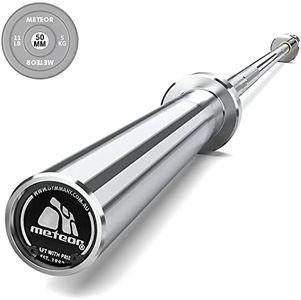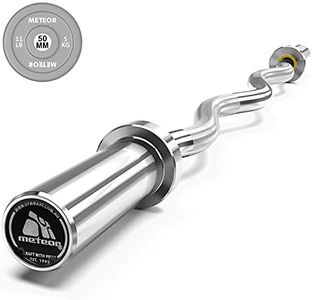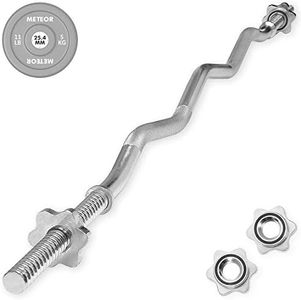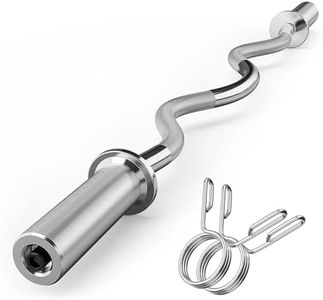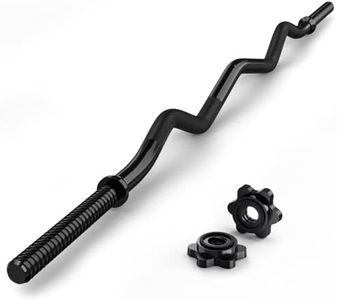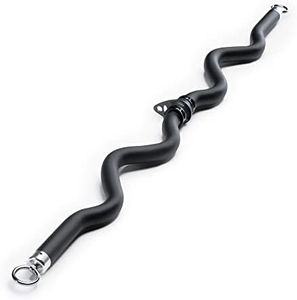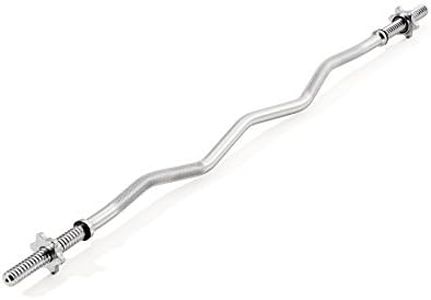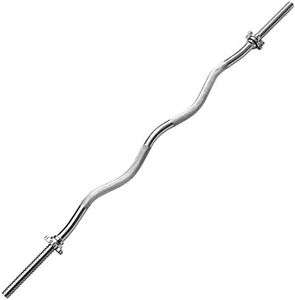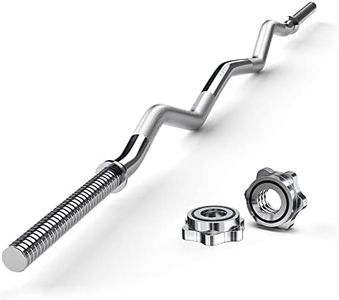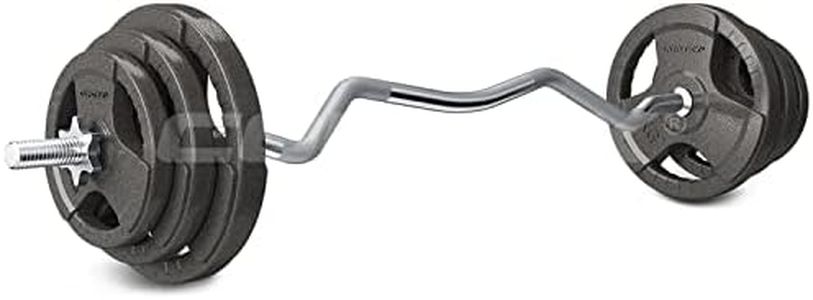We Use CookiesWe use cookies to enhance the security, performance,
functionality and for analytical and promotional activities. By continuing to browse this site you
are agreeing to our privacy policy
10 Best Curl Bars
From leading brands and best sellers available on the web.Buying Guide for the Best Curl Bars
When shopping for curl bars, it's important to understand what features will help you get the most out of your workouts. Curl bars, also known as EZ bars, are mainly used for exercises that target the arms, especially the biceps and triceps. Selecting the right curl bar is about finding a comfortable, safe, and durable option that matches your strength level, workout style, and fitness goals. By learning which specifications matter, you can avoid wasting money on a bar that doesn’t suit your needs and make your workouts more effective.Bar WeightBar weight refers to how heavy the curl bar itself is, without any weights added. This is important because it determines your starting resistance and can affect the feel of the bar when lifting. Lighter bars, typically 10-15 pounds, are great for beginners or those focused on high-rep workouts, while heavier bars, often around 20-25 pounds, may suit more experienced lifters or those looking for greater resistance. To pick the right one, think about your current strength and how you plan to use the bar—beginners and those doing a lot of reps will likely prefer something lighter, while more advanced users might want the challenge of a heavier bar.
Bar LengthBar length is how long the curl bar is from end to end. This affects how wide you can grip the bar and how much space you need to use it. Shorter bars, about 4 feet, are more compact and easier for home gyms with limited space, but may have less space for weight plates. Longer bars, closer to 5 feet, give more room for your hands and for loading plates, making them generally more comfortable for people with broad shoulders or for lifting heavier weights. Think about where you’ll use the bar and your body size—if space is tight or you have a smaller frame, a shorter bar may be best; otherwise, a longer one can offer more versatility.
Grip Type and KnurlingThe grip type and knurling refer to the shape of the handle and the textured pattern cut into the metal where you grip the bar. This is important for comfort and safety, as a good grip can prevent slipping and make lifting more enjoyable. Bars with deep knurling provide a more secure grip but may feel rough on your hands, while smoother or lighter knurling is easier on the skin but can be slippery if your hands sweat. The curve of the bar (the 'EZ' shape) is designed to ease strain on your wrists. Try to choose a grip texture that matches your comfort level and think about whether your hands sweat a lot—those who want a firm hold might opt for more aggressive knurling, while those with sensitive hands may want something smoother.
Weight CapacityWeight capacity is the maximum amount of weight the curl bar can safely handle. This is important for safety and durability; exceeding this limit can damage the bar or pose a risk during workouts. Some bars can handle only 100-150 pounds, which is enough for most beginners, while more robust bars can take 200 pounds or more, suiting stronger or progressing lifters. To pick the right capacity, consider your current strength and future progress—if you plan to lift heavier as you get stronger, choose a bar with a higher weight limit for lasting safety and use.
Sleeve Type (Standard vs Olympic)The sleeve type refers to the ends of the bar where you load weight plates. Standard sleeves are usually 1 inch in diameter, fit smaller and often less expensive plates, while Olympic sleeves are 2 inches and made for Olympic-style plates found in most gyms. This matters because it determines what weights you can use and sometimes how smoothly they spin. If you already own plates, get a bar that matches them; if you plan to buy new weights, Olympic is often more versatile and widely supported, but standard bars can be perfect for home gyms with basic needs.
Finish and Build QualityFinish and build quality describe the surface coating and overall construction of the bar. A quality finish like chrome, black oxide, or zinc helps prevent rust and gives the bar a nice look, while poor coatings may chip or corrode easily. Welds and assembly should feel secure with no rattling. If you want your bar to look good and last long, especially in a humid or garage gym, choose one with a reputable, rust-resistant finish and sturdy construction. For casual or indoor use, finish may be less critical, but build quality should always be solid for safety.
